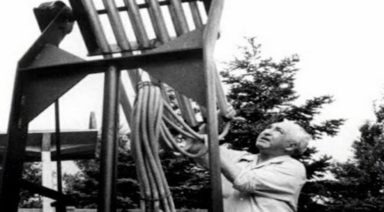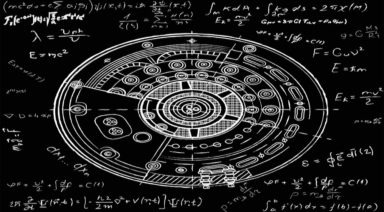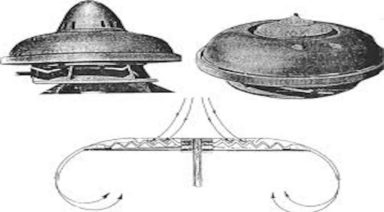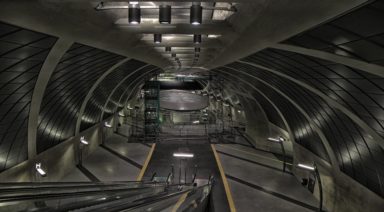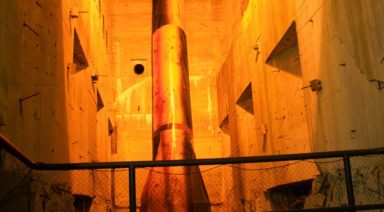Stargates and Hidden Portals on Earth and in Space

In 2015, NASA admitted that the idea of Earth portals — areas on the planet that instantly teleport human beings from one place to the other — are a reality that they have been studying for quite some time.
One of NASA’s spacecraft, the THEMIS, and cluster probes from Europe have amassed enough observational data to confirm that a magnetic stargate portal exists in many locations.
Usually these are found where the faraway geomagnetic field bumps up against the passing solar wind. The result is a direct pathway between the Earth and the sun.
In March 2015, NASA launched its Magnetospheric Multiscale Mission (MMS) that, among other things, is tasked with studying these portals to gain a deeper understanding of them. Most of these are small with short lives, though others have been observed as gaping holes with sustained lifespans. Opening and closing numerous times during the day, magnetic forces mingle, allowing their crackling energy particles to flow between the Earth and the sun. These meeting points — called X-points by NASA — have been pinpointed by scientists using polar data.
The Bermuda Triangle
The Bermuda Triangle is probably the most famous stargate portal. Encompassing three vertices, the Bermuda Triangle — sometimes referred to as the Devil’s Triangle — is a large abyss that stretches between San Juan, Puerto Rico, Bermuda Island, and Miami, Florida. First noted in late 1950 or early 1951, the Bermuda Triangle was deemed to be a mysterious area in which huge military ships and planes were “lost” without any other plausible explanation forthcoming from the government or the military. In 1964, Vincent H. Gaddis argued that the Bermuda Triangle was the site of strange occurrences such as disappearing tanker ships and jets with the government being unwilling — or unable — to provide a reason or explanation.
The Philadelphia Experiment
The Philadelphia Experiment, also sometimes called Project Rainbow, grew out of the desire to cloak the U.S. Navy’s destroyer, USS Eldridge, so that enemy devices were not able to detect it. Built on concepts relative to stargate portals, the project relied on a technological application developed by well-known and respected scientific greats Nikola Tesla and Albert Einstein.
Testing started in 1943 and was successful to a large degree. In fact, some witnesses noted that they saw a green fog in the area where the massive ship once stood. Further experiments in late October resulted in the USS Eldridge vanishing from its shakedown cruise in the Bahamas. Simultaneously, sailors stationed 375 miles south at the Norfolk Naval Base in Norfolk, Virginia, reported the ship’s appearance for several minutes before it vanished.
Alfred Bielek, a former crew member on board the USS Eldridge, and Duncan Cameron, who would later work on the Montauk Project, jumped from the deck of the USS Eldridge when it was trapped in hyperspace and landed in the future.
Once they arrived at Camp Hero in 1983, they were tasked with returning to the USS Eldridge in order to destroy the equipment holding the ship in hyperspace. The pair did so successfully before leaping off the deck and materializing in the current year.
The Montauk Project
Located at Montauk, Long Island, New York, Montauk Air Force Station, also known as Camp Hero, was the site of The Montauk Project. An extension of the famed Philadelphia Experiment, this United States government-backed research project sought to further substantiate data on magnetic fields and their physiological effects.
Once secret funding was received from the Department of Defense, various experiments were conducted, including the creation of a dimension portal that enabled researchers to travel to far-flung locales. As a result of their success, researchers also developed a time tunnel in which contact was made with aliens, as well as underground tunnels and brain reprogramming methods. In Another Notable Incident, a flying saucer became stuck in the Montauk underground tunnels with its alien crew demanding a crystal needed to repair the engines so they could leave.
The Military and Space Portal Research
It should be no surprise to learn that the military is both a conduit and a supporter of space portal research. With billions of dollars in research funding funneled to various projects by the Department of Defense, a significant amount was earmarked to allow the military to establish a Stargate Portal. During the Iraq War, under the guise of searching for weapons of mass destruction (WMD), then-President George W. Bush invaded that country in an effort to control a Dimension Portal and stop extraterrestrials from annihilating humankind or culling the world’s population.
Skinwalker Ranch
Located in Uintah County in Utah, Skinwalker Ranch — also called “UFO Ranch” — is one of the state’s most famous areas of paranormal activity. With a history dating back more than 50 years, Skinwalker Ranch has been the site of paranormal activity such as crop circles, poltergeists, UFOs, dire wolf sightings, glowing orbs and other extraterrestrial occurrences.
The family who owned the ranch from 1994 until 1996 reported that cattle on the ranch were found mutilated or they simply vanished into thin air. Piercing red eyes glared at them from oversized animals that did not appear to be injured even when shot with bullets.
Respected businessman Robert T. Bigelow believed so strongly that activities such as these were important to the survival of the planet that he formed the National Institute for Discovery Science (NIDS) and staffed it with top scientists in the field. In 1996, the organization acquired the ranch in order to study its paranormal activity in depth. Numerous unexplainable events were chronicled, including stargates that emitted magnetic fields that were highly destructive.
Flying Saucers and NASA
In early June 2015, NASA had a second successful test flight of its flying saucer that goes by the codename of Low-Density Supersonic Decelerator (LDSD). The space agency started out by updating technology and applications that were decades old. They then sought to address issues with its huge parachute that became evident during its inaugural public testing. With its distinctive ring shape and ability to propel and brake at altitudes of 180,000 feet, it appears that NASA is positioning the LDSD Flying Saucer so that it can be used to conduct further explorations of Mars.
Stargate portals, flying saucers, the Unified Field Theory and other technologies have made strides in providing a method of communicating with other entities within the galaxy as well as facilitating the movement of people instantly. Despite what many may believe, with continued research it is likely that regular contact with aliens will be made soon. Though the government would like to cover up the real reason behind these occurrences and label them hoaxes, it is more likely that they simply want to be in control of the outcome of the research and take credit for it.

Alleged Volcanic Eruption on Mars Sparks NASA Cover-Up Conspiracy

Conspiracy and speculation erupted across the internet yesterday over an alleged volcanic plume stretching roughly 1,200 miles across the Martian atmosphere. The plume appears to originate from the planet’s supposedly dormant Arsia Mons volcano.
Images of the activity were taken on Sept. 24 by the Mars Express orbiter and later published by the European Space Agency.
According to NASA, volcanic activity on the red planet ceased some 50 million years ago after Earth’s Cretaceous-Paleogene event that killed off the dinosaurs, but some believe this latest imaging shows otherwise.
Spurred by conjecture from a popular YouTube conspiracy channel, claims of volcanic activity on Mars reignited theories of government cover-ups and strange happenings within NASA, the FBI and other controversial government agencies.
Many are pointing to last month’s Sunspot National Observatory shutdown, the switch to a limited “safe mode” on the Hubble and Chandra telescopes, and the sudden failure of NASA’s Mars Curiosity Rover as evidence that strange events occurring on the planet may be intentionally obfuscated.
Arsia Mons is located within a tightly situated line of volcanoes on Mars, collectively known as Tharsis Montes, which lie in the shadow of Olympus Mons – the largest volcano in our solar system (more than twice the size of Mt. Everest).
Arsia Mons happens to be the planet’s second largest volcano in terms of volume and is home to a series of caves NASA has studied as the best places to situate research and habitation modules. Could there be something already underway?
“This project developed a revolutionary system to exploit the novel idea of extraterrestrial cave use” stated a project summary published in 2004, further explaining that two “missions” were tested to gather data.
Arsia Mons is known to have an annual whether phenomenon in which sunlight warms the area around the volcano, bringing small amounts of dust into the air. Rising air currents bring this dust and other fine sediment above the volcano’s caldera into a thick, spiraling cloud that is big enough to be seen by a probe orbiting the planet.
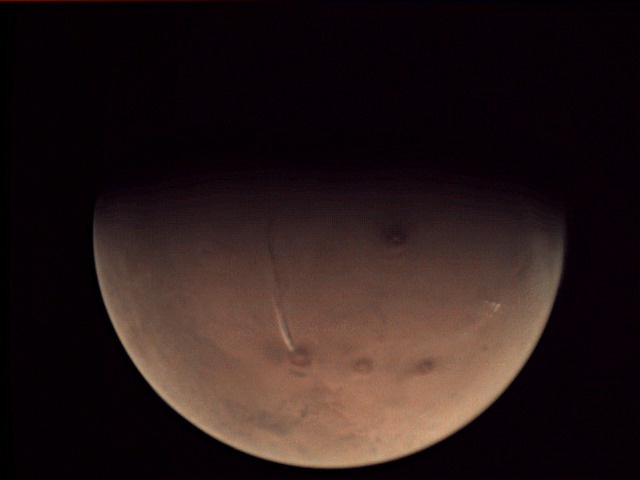
But the latest plume looks nothing like the spiraling cloud recorded from this phenomenon in the past. Instead it appears as more of a streaking trail that’s persisted over the course of weeks.
NASA has attributed the plume to water ice clouds that are gathering over the volcano. The agency says that at certain times of year, the small amounts of water in the atmosphere freeze and condense near areas of high altitude, notably above this volcanic region.
If this is the case, then maybe there’s significantly more water on the red planet than previously believed and we should study the areas it’s sublimating from.
But then again, there’s always some simple explanation from NASA that seems to make everyone’s concerns seem trivial. Is this really just a storm or are they covering up something far greater?
For more on the drips of disclosure coming from NASA’s Mars operations, check out this episode of Deep Space:








